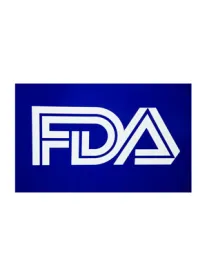In another highly anticipated regulatory move, FDA has released draft guidance on “Labeling for Biosimilar Products.” Made public on March 31st, the draft guidance sets forth FDA’s recommendations on the labeling of biosimilar products that are approved via the abbreviated licensure pathway created in 2010 by the BPCIA. The Agency has been under pressure for many months now to issue some sort of policy on biosimilar labeling, whose contours will have dramatic impacts on the growth and development of this industry in the United States.
Many stakeholders have been critical of last year’s final labeling package for Zarxio (filgrastim-sndz), the first biosimilar approved in the U.S., because that labeling was essentially identical to the labeling for the reference filgrastim product, Amgen’s Neupogen. Biologic manufacturers (such as AbbVie, who in December filed a Citizen Petition with FDA regarding the scope and content of biosimilar labels) have cited concerns that labeling for a biosimilar should not be “the same as” the reference biologic’s label in the same way that generic drug labels are generally the same as their reference listed drug product’s label. These industry stakeholders, along with certain patient and provider groups, argue that biosimilars should not be treated the same as generic drugs because the statutory standard for FDA approval is that a biosimilar be “highly similar” to its reference and have “no clinically meaningful” differences compared to the reference biologic – a different approval standard than what small-molecule generic drugs have under the Hatch-Waxman Act. On the other hand, FDA also received another Citizen Petition late last year that requested generic drug-style labeling for the biosimilar class of products.
Therefore, a key aspect of the newly issued draft guidance is the extent to which biosimilar labeling should be consistent with the label of the reference product. FDA is not requiring biosimilar labels to be identical to its reference product; however, it proposes that biosimilar labels should heavily rely upon their reference products. Specifically, FDA states in the draft guidance:
“FDA’s finding of safety and effectiveness for the reference product…may be relied upon to provide health care practitioners with the essential scientific information needed to facilitate prescribing decisions for the proposed biosimilar product’s labeling conditions of use (e.g., indication(s), dosing regimen(s)).”
Accordingly, the Agency explains, biosimilar product labeling should not need to describe the specific studies and data collected by the biosimilar developer to demonstrate that it is “highly similar” to the reference product. FDA’s guidance further clarifies that biosimilar labels should only include biosimilar-specific information when that information is “necessary to inform safe and effective use of the product” – for example, when the biosimilar has a different administration or preparation instructions as compared to its reference product. The Agency also clearly states that a biosimilar product sponsor is responsible for updating the labeling if new safety or risk information emerges and thus should be monitoring and reviewing all the traditional sources of new adverse event information. In other words, unlike a generic drug sponsor, a biosimilar sponsor cannot solely rely on labeling updates made by the reference drug sponsor – another distinguishing feature of these products versus generic drugs that may have wider implications, such as in state failure-to-warn product liability cases.
Finally, in what may come as a relief to biological manufacturers and other stakeholders that raised concerns that biosimilar labeling may not clearly state that the product has been approved via the abbreviated 351(k) pathway, the Agency is requiring a so-called “biosimilarity statement” at the top of the professional package insert. The statement would clearly indicate that the drug is a biosimilar and also identify the reference product upon which its approval was based. The biosimilarity statement would be supported by a footnote that explains briefly what a biosimilar product is by summarizing the BPCIA’s approval standards. As senior FDA official Dr. Leah Christl notes in a website announcement for the new labeling guidance, health care providers and other stakeholders who wish to learn more about the comparative studies and other data supporting a new biosimilar will be able to do so through the review documents that the Agency makes publicly available after final approval.
The draft guidance also includes several other recommendations, such as how to accurately describe immunogenicity risks and which product names to use in particular sections – e.g., the reference product’s proprietary name; the biosimilar product’s proprietary name (if any) or the biosimilar’s nonproprietary/proper name; or the products’ core name that would be shared by both the biosimilar and its reference. Naming-specific guidelines have not yet been finalized, but they were proposed last year.
Comments on FDA’s draft biosimilar labeling guidance should be submitted to Docket No. FDA-2016-D-0643 on or before June 3, 2016 (60 days after publication of formal notice in the Federal Register).





 />i
/>i

